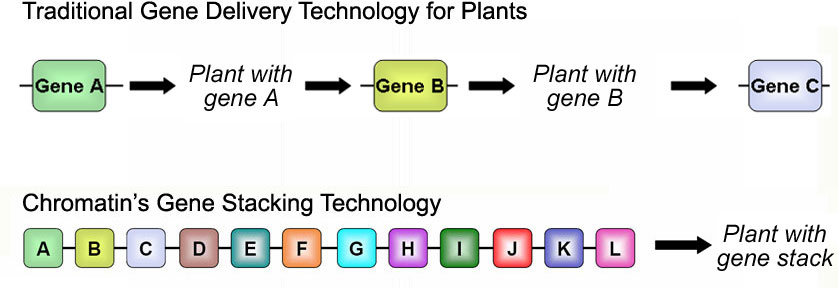minichromosome technology
Agriculture has come a long way with the latest technological advancements. Today, we have discovered many ways to improve the quality and yield of crops, as well as reduce the work and resources required to grow them. Among the most interesting innovations is Minichromosomal technology, which promises to revolutionize the way food is produced.
Using Minichromosomal Technology in Agriculture
Minichromosomal technology is a genetic-engineering technique that has the potential to provide long-term benefits for crop production. It involves the use of a minichromosome that contains genes that are responsible for improving crop yields and making plants more resistant to diseases and pests. The process involves inserting this minichromosome into the plant’s genome, which allows it to function alongside the existing genes.

Abstract
The purpose of this report is to discuss the potential benefits of using minichromosomal technology in agriculture. We will review the features and applications of this technique, and how it can be used to enhance crop productivity and sustainability. We will also explore some of the concerns and objections raised by critics of this technology, and evaluate their validity.
Introduction
The global population is expected to reach 9.7 billion by 2050, which means that the demand for food will increase exponentially. This puts pressure on farmers to produce more crops, using fewer resources and under increasingly challenging environmental conditions. Fortunately, the advancement of technology provides a solution to this problem.
In recent years, genetic engineering has become one of the most promising fields of research in agriculture. This technique involves modifying the genetic structure of crops to enhance their productivity, nutritional value, and resistance to diseases and pests. However, genetic engineering has also faced criticism from some groups, due to concerns about the safety and ethical implications of the technology.
Despite these concerns, some genetic engineering techniques offer many potential benefits for agriculture. One of these techniques is minichromosomal technology, which has recently been gaining attention in the scientific community due to its potential to significantly improve crop production.
Content
Minichromosomal technology involves the insertion of a minichromosome into a plant’s genome, which contains genes that improve the plant’s productivity and resistance to environmental stressors. The technique has many potential applications for a range of crops, making it a popular area of research for scientists and agricultural experts.
One potential use of minichromosomal technology is to improve the yield of staple crops, such as rice, wheat, and maize. These crops are the primary source of food for millions of people worldwide. However, environmental stressors such as drought, salinity, and pests can significantly reduce their yield. By using minichromosomal technology, scientists hope to enhance the plants’ resilience to these stressors and increase their productivity.

Another potential use of minichromosomal technology is to create crops that require fewer resources to grow. For example, some crops, such as rapeseed, require a lot of nitrogen to grow. However, nitrogen is a limited resource that is primarily obtained through fertilizers, which can be expensive and harmful to the environment. By using minichromosomal technology to create crops that can produce their own nitrogen, farmers can reduce their use of fertilizer and reduce the environmental impact of their practices.
Minichromosomal technology also has applications for crops that are prone to diseases and pests. By introducing a minichromosome containing genes that promote resistance to these hazards, farmers can reduce their reliance on pesticides and fungicides, which can be harmful to human health and the environment. Additionally, crops that are more resistant to diseases and pests are less likely to suffer from crop failures, which can have devastating consequences for farmers and their livelihoods.
One of the potential concerns of using minichromosomal technology is its potential impact on biodiversity. Currently, many crops rely on genetic diversity to maintain their productivity and adaptability to changing environmental conditions. If crops are engineered to contain the same genes, there is a risk that they may become more vulnerable to diseases and pests, or may not be able to adapt to changing environmental conditions. However, proponents of minichromosomal technology argue that it can be used in conjunction with traditional breeding methods to maintain genetic diversity.
Conclusion
In conclusion, minichromosomal technology is a powerful tool that has the potential to significantly enhance crop productivity while reducing the environmental impact of agriculture. By inserting a minichromosome containing desirable genes into a plant’s genome, scientists can improve its yield, resistance to environmental stressors, and nutritional value.

While concerns have been raised about the potential impact of this technology on biodiversity, it is clear that there are many potential benefits that make minichromosomal technology a promising area of research in agriculture. Future studies should focus on testing the viability and safety of this technology and ensuring that it is used responsibly and ethically for the betterment of global food security.

Source image : www.pakissan.com

Source image : www.agritechtomorrow.com

Source image : alfin2300.blogspot.com







